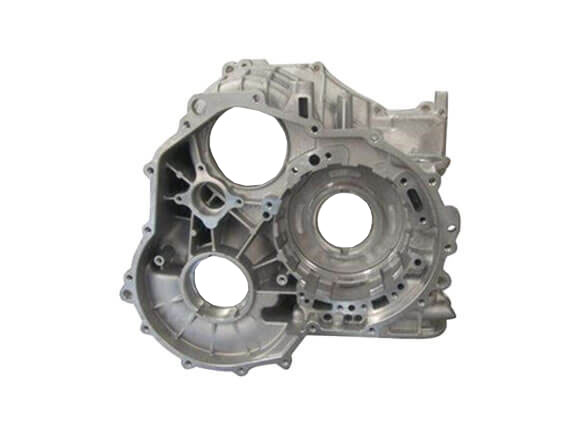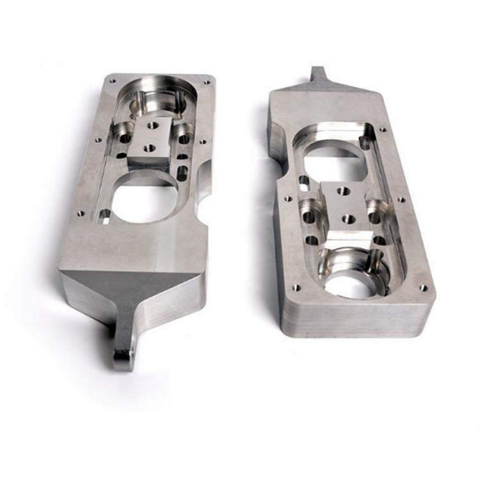How Aluminum Foundry Helps Create Durable Components for Every Industry
Aluminum Casting Techniques: a Deep Dive Into Materials and Techniques for Success
Aluminum casting strategies play a necessary function in production. Different methods exist, each matched to various applications and needs. Sand casting is preferred for larger elements, while die casting is recognized for its precision in high-volume manufacturing. Investment casting uses detailed styles with superior finishes. Understanding these differences can greatly influence task end results. aluminum casting. Picking the proper method is not always simple, leading to essential considerations that need to be explored further.
Recognizing Aluminum Casting: An Introduction
Aluminum casting is a necessary production process utilized throughout various industries to create elaborate components with high precision. This method involves putting liquified aluminum into a mold and mildew, enabling it to strengthen and take the shape of the wanted component. The adaptability of aluminum, incorporated with its corrosion-resistant and lightweight residential or commercial properties, makes it an optimal choice for applications in auto, aerospace, and customer items.
Various casting techniques exist, each fit to specific needs and job ranges. Elements such as mold materials, cooling prices, and the complexity of the style play a significant function in identifying the most reliable method. In addition, the residential properties of the aluminum alloy used can impact the end product's strength, durability, and surface area finish.
Comprehending the fundamentals of aluminum casting makes it possible for producers to enhance production procedures, decrease waste, and guarantee high-grade result, which is important in today's competitive market.
Sand Casting: Applications and techniques
Amongst the different techniques utilized in aluminum casting, sand casting stands out because of its versatility and cost-effectiveness. This technique entails developing a mold from a blend of sand and binder, which can be formed to fit intricate styles. When the mold and mildew is prepared, molten aluminum is poured into it, permitting for detailed attributes and details to be captured.
Sand casting is specifically helpful for producing large parts and low-volume manufacturing runs, making it excellent for vehicle components, machinery parts, and imaginative sculptures. The method additionally suits a variety of aluminum alloys, enhancing its convenience in numerous applications. In addition, making use of sand as a mold product allows for simple recovery and reuse, adding to ecologically sustainable methods. Accomplishing high dimensional accuracy can present obstacles, demanding experienced workmanship and cautious control of the casting procedure. Generally, sand casting stays an essential method in aluminum factories worldwide.
Die Casting: Precision and Efficiency
Die casting is an extremely effective technique of creating aluminum parts with remarkable dimensional precision and surface coating. This process involves requiring molten aluminum into a precisely machined mold and mildew under high stress, which permits elaborate styles and marginal product waste. The rapid cooling of the alloy within the mold and mildew leads to a solidified component that usually requires little to no extra machining.
Die casting is especially useful for high-volume production runs, where uniformity and rate are paramount. It sustains the development of intricate geometries, making it appropriate for various applications, including vehicle, aerospace, and customer goods.
Furthermore, the process can suit different aluminum alloys, improving the mechanical residential or commercial properties of the ended up products. With its capacity to produce light-weight yet sturdy components, die casting stands apart as a recommended technique in modern-day manufacturing, delivering both precision and performance in aluminum casting.
Financial Investment Casting: Detail and Complexity
Investment casting, additionally referred to as lost-wax casting, is a specific and flexible method for producing complicated aluminum parts. This strategy is particularly valued for its ability to develop detailed geometries and fine details that are frequently unattainable with other casting methods. The process starts with a wax pattern, which is covered in a ceramic shell. As soon as the covering hardens, the wax is disappeared, leaving a detailed mold and mildew for aluminum putting.
The advantages of investment casting include superior surface coating and dimensional accuracy, decreasing the need for substantial machining afterward. It is specifically advantageous for small to medium production runs where precision is important. This method suits different aluminum alloys, improving its applicability across markets. Aluminum Casting Company. Ultimately, financial investment casting attracts attention for its capacity to deliver both aesthetic appeal and functional performance in aluminum components, making it a preferred option for engineers and developers seeking complicated options

Choosing the Right Method for Your Job
How can one figure out the most appropriate aluminum casting approach for a certain project? The choice procedure rests on numerous crucial aspects, consisting of the complexity of the style, the wanted surface coating, and production quantity needs. For elaborate styles, financial investment casting frequently proves beneficial due to its capability to catch great information. Conversely, sand casting may be chosen for bigger, less complex parts, supplying cost-efficiency and versatility in production.
Additionally, considerations regarding tolerances and mechanical residential or commercial properties of the end product are crucial. For high-performance parts, die casting might be the very best choice, as it provides remarkable dimensional precision and surface quality. On top of that, recognizing the material residential or commercial properties and compatibility with the selected technique is very important for making certain the success of the job. Ultimately, a complete analysis of these aspects will certainly direct the decision-making procedure, resulting in the most reliable aluminum casting method for the specific project available.
Frequently Asked Concerns
What Is the Environmental Impact of Aluminum Casting Approaches?

How Can I Boost the Surface Area Finish of Cast Aluminum?
To boost the surface coating of actors aluminum, one can utilize strategies such as sandblasting, brightening, and using coverings. Proper mold and mildew style and temperature level control also considerably enhance the last surface area high quality of the actors item.
What Security Precautions Should Be Taken During Aluminum Casting?
Throughout aluminum casting, necessary security preventative measures consist of putting on protective equipment, ensuring proper ventilation, utilizing fireproof products, keeping a secure distance from liquified steel, and sticking to tools safety and security procedures to protect against injuries and crashes.
Just how Do I Repair Typical Casting Defects?
To repair usual casting problems, one need to inspect the mold and mildew for damages, examine the alloy composition, check putting temperature level, change cooling prices, and warranty appropriate airing vent to check here decrease air entrapment and boost casting quality.
What Are the Expenses Related To Various Aluminum Casting Techniques?
The expenses associated with various aluminum casting techniques vary substantially, affected by elements such as material costs, labor, devices, and manufacturing scale. Budget factors to consider are crucial for picking one of the most suitable casting approach for particular jobs.
Sand casting is favored for larger elements, while die casting is understood for its precision in high-volume manufacturing. Among the numerous techniques made use of in aluminum casting, sand casting stands out due to its adaptability and cost-effectiveness. Die casting is a highly efficient technique of creating aluminum elements with outstanding dimensional precision and surface area finish. Investment casting, also known as lost-wax casting, is a versatile and exact technique for generating intricate aluminum elements. Exactly how can one determine the most suitable aluminum casting approach for a certain project?